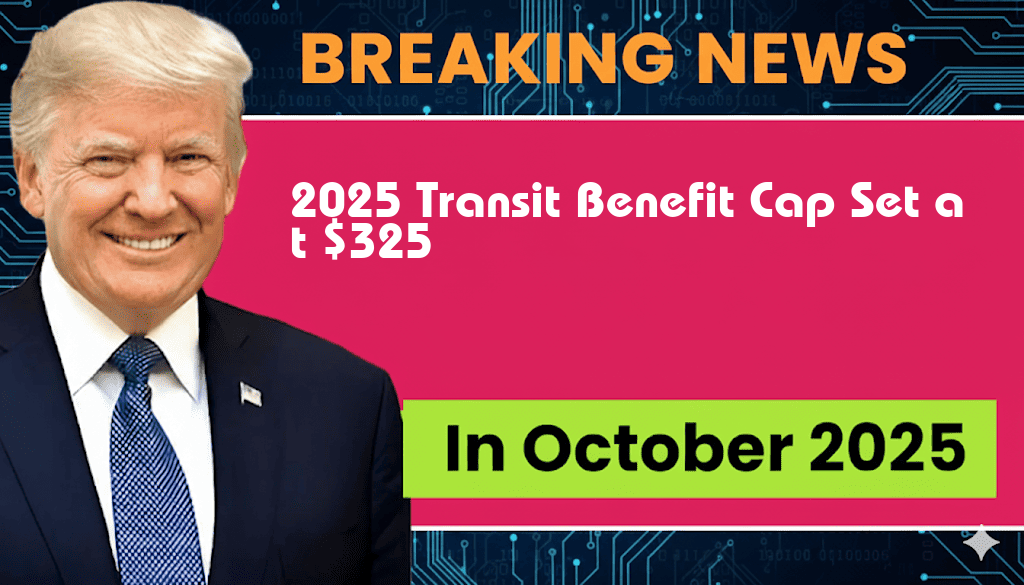2025 Transit Benefit Cap Set at $325: Discover Your Monthly Savings
As part of the ongoing efforts to support commuters across the United States, the Internal Revenue Service (IRS) has announced that the transit benefit cap for 2025 will be set at $325 per month. This decision marks a significant increase from previous years, providing employees with enhanced financial relief for their commuting costs. The transit benefit program allows employers to offer tax-free transit subsidies to employees, effectively reducing their taxable income. This change is expected to encourage more individuals to utilize public transportation options, thereby easing traffic congestion and promoting sustainable commuting practices.
Understanding the Transit Benefit Program
The transit benefit program was established to help employees offset the costs associated with commuting via public transportation. Employers can provide these benefits in various forms, including transit passes, vouchers, or payments to cover the cost of commuting. The IRS guidelines outline the specifics of the program, including eligibility and tax implications.
Key Features of the 2025 Cap Increase
- Monthly Cap: The new cap of $325 offers a substantial increase from the 2024 cap, which stood at $300.
- Tax Benefits: Employees can receive these benefits tax-free, resulting in significant savings on their overall commuting costs.
- Employer Participation: Employers are encouraged to participate in the program as it enhances employee satisfaction and can improve retention rates.
Potential Savings for Commuters
The increase in the transit benefit cap translates to real savings for employees. For instance, an employee commuting via public transit who regularly spends $250 on monthly fares can now enjoy additional savings. With the cap set at $325, they can allocate up to $75 towards other commuting expenses, such as parking or rideshare services, without incurring additional taxes.
Comparative Savings Table
| Year | Monthly Cap | Employee Out-of-Pocket Cost | Potential Savings |
|---|---|---|---|
| 2024 | $300 | $250 | $50 |
| 2025 | $325 | $250 | $75 |
Encouraging Public Transportation Use
The increase in the transit benefit cap is part of a broader initiative to promote public transportation usage. As traffic congestion continues to plague urban centers, providing financial incentives for commuters to shift from personal vehicles to public transit can have a positive impact on both the environment and urban infrastructure.
Benefits of Public Transportation
- Reduced Traffic Congestion: Increased use of public transit can lead to fewer cars on the road, which alleviates congestion.
- Environmental Impact: Public transit is generally more environmentally friendly compared to individual car usage, contributing to lower carbon emissions.
- Cost-Effectiveness: Commuters can save money on fuel, parking, and vehicle maintenance by opting for public transit.
Future of Commuting Benefits
As remote work continues to influence commuting patterns, employers are exploring flexible benefits packages that cater to the diverse needs of their workforce. The increase in the transit benefit cap aligns with these trends, making it easier for employers to attract talent and support their employees’ commuting needs.
For more information on the transit benefit program and updates on commuting policies, visit the Forbes advisor for in-depth insights.
The implementation of the increased cap is expected to roll out smoothly, and employers are encouraged to communicate these changes to their employees to maximize participation and benefit from the program.
Frequently Asked Questions
What is the new transit benefit cap for 2025?
The new transit benefit cap for 2025 has been set at $325 per month, allowing employees to save more on their commuting costs.
How can I take advantage of the transit benefits in 2025?
Employees can take advantage of the transit benefits by participating in employer-sponsored programs that allow them to allocate pre-tax dollars towards their monthly commuting expenses.
Will the $325 cap apply to all types of transit expenses?
Yes, the $325 cap applies to various transit expenses, including public transportation fares, parking fees, and other commuting costs as defined by the IRS.
How does the transit benefit cap affect my taxable income?
Utilizing the transit benefit cap can reduce your taxable income since the funds used for commuting are deducted from your paycheck before taxes are applied.
Are there any changes to the transit benefit program for employers in 2025?
Employers may need to adjust their transit benefit program offerings to accommodate the new cap of $325, ensuring that employees benefit from the maximum allowed savings.
